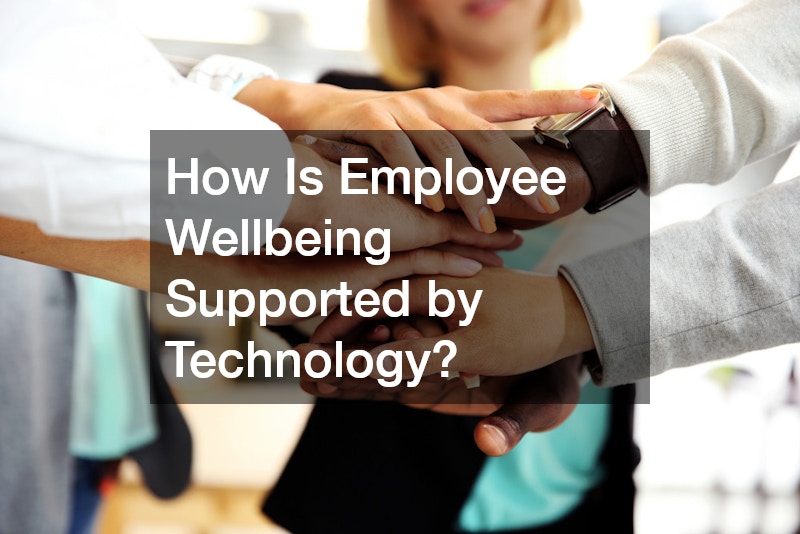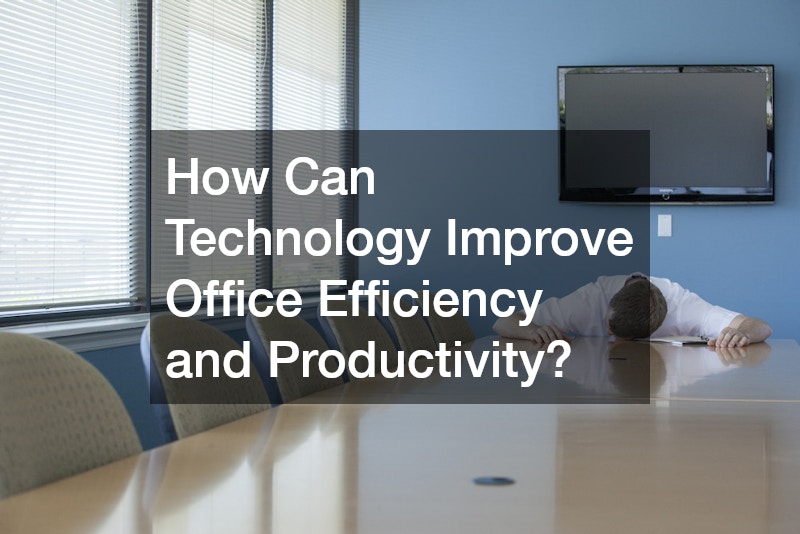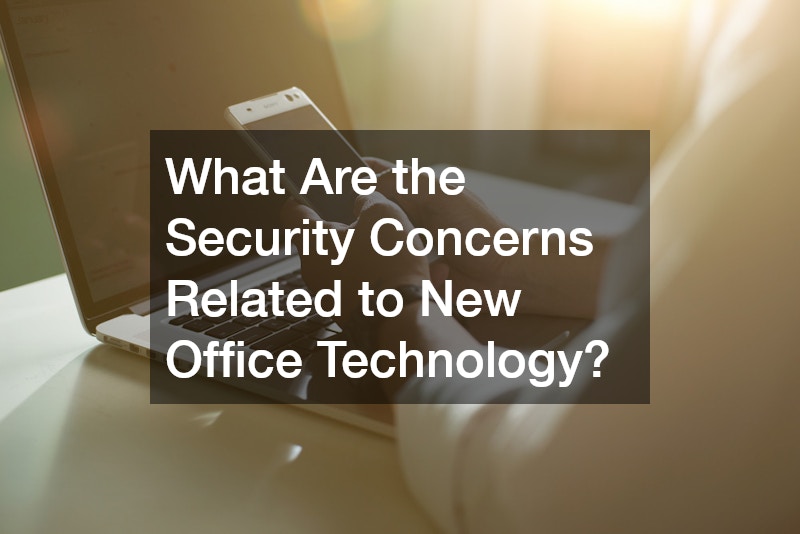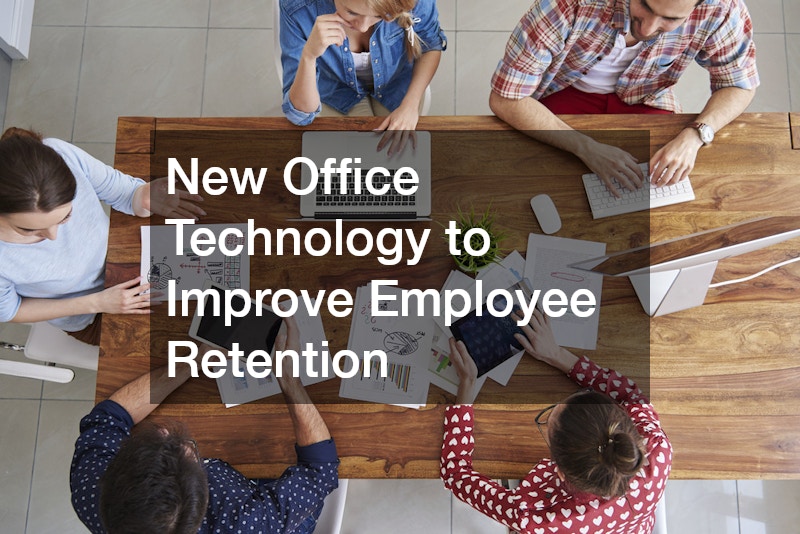In today’s competitive landscape, employee retention is a critical focus for organizations aiming to maintain a robust workforce. As businesses strive to create an engaging and supportive work environment, the integration of new office technology emerges as a powerful strategy. This article delves into how modern tools and systems can significantly enhance employee satisfaction and loyalty. From advanced communication platforms to ergonomic solutions that alleviate issues like low back pain, technology serves as a cornerstone for fostering a workplace that not only attracts talent but also retains it. As we explore various aspects of office technology, we will see how factors like HVAC services and effective staffing agency collaborations contribute to a holistic employee experience.
1. How Can New Office Technology Enhance Employee Engagement?
1.1 Tools for Communication and Collaboration
Effective communication is essential for any organization’s success. New office technology has revolutionized the way teams interact. Tools like Slack, Microsoft Teams, and Zoom facilitate seamless communication, regardless of whether employees are in the office or working remotely. A well-connected environment fosters collaboration, which is vital for enhancing employee engagement. For instance, web designers can easily share ideas and prototypes, leading to faster project turnarounds. Furthermore, when employees feel connected to their colleagues and the organization’s mission, they are more likely to remain committed to their roles.
1.2 Employee Feedback Platforms
Regular feedback is crucial for employee growth and satisfaction. Modern organizations leverage technology to create platforms where employees can share their thoughts and experiences anonymously. These platforms not only facilitate open communication but also give management insight into areas that may need improvement. For instance, if a significant number of employees report discomfort due to HVAC services or issues related to workspace ergonomics, companies can take immediate action. By addressing concerns and showing that employee voices are valued, organizations can significantly enhance retention rates.
2. What Are the Impacts of Flexible Work Solutions on Retention?
2.1 Remote Work Technologies
Remote work has transformed the workplace, offering employees the flexibility to balance their professional and personal lives. New office technology such as cloud computing and project management tools allow employees to work from anywhere, creating a more adaptable work environment. This flexibility is especially appealing to a diverse workforce, which can include web designers who may thrive in creative home offices or employees with audiology services needs who benefit from a quieter, controlled environment. Organizations that embrace remote work options often see higher retention rates, as employees appreciate the autonomy and work-life balance it affords.
2.2 Scheduling and Time-Management Tools
As remote work gains traction, effective scheduling and time-management tools have become indispensable. Applications like Trello, Asana, and Google Calendar help employees manage their tasks efficiently, reducing stress and preventing burnout. This is particularly crucial for employees in manufacturing or roles requiring precise time management. Additionally, these tools enable employees to align their work schedules with their personal commitments, further enhancing job satisfaction. When employees feel they have control over their time, they are less likely to seek opportunities elsewhere.

3. How Does Technology Improve Training and Development?
3.1 Online Learning Management Systems
Investing in employee training is crucial for retention, and online learning management systems (LMS) provide a platform for continuous development. These systems offer a range of courses that employees can access at their convenience, accommodating different learning styles and schedules. Whether it’s a web designer honing their skills in a new programming language or a process server learning about legal updates, an LMS allows for tailored training experiences. Companies that prioritize development opportunities signal to their employees that they are invested in their long-term success, leading to higher retention.
3.2 Virtual Reality for Skill Training
Innovative technologies such as virtual reality (VR) have made their way into employee training programs, especially in fields requiring hands-on skills. For instance, in manufacturing, VR simulations can provide workers with realistic training experiences, allowing them to practice in a safe environment. This technology can be especially beneficial for new employees who need to familiarize themselves with complex equipment without the associated risks. When employees feel competent and confident in their skills, they are more likely to remain with the company.
4. What Role Does Technology Play in Creating a Positive Workplace Culture?
4.1 Tools for Hybrid Work Environments
With the rise of hybrid work models, technology has become essential for maintaining a cohesive workplace culture. An electrical service and IT team can provide tools that facilitate communication and collaboration among remote and on-site employees help bridge the gap between different work environments. For example, companies can use platforms like Zoom or Microsoft Teams to conduct regular check-ins and team-building activities, ensuring that all employees feel included. A positive environment where employees feel they belong will significantly reduce turnover rates.
4.2 Platforms for Diversity and Inclusion
Diversity and inclusion are key components of a positive workplace culture. Technology enables organizations to implement initiatives that promote inclusivity, such as anonymous reporting tools for bias or discrimination and platforms for employee resource groups. By actively engaging in diversity efforts, companies can create a supportive environment that values all employees, leading to higher retention. When staff see that their employers prioritize diverse voices, they are more likely to feel valued and committed to their roles.

5. How Is Employee Wellbeing Supported by Technology?
5.1 Mental Health Apps
Employee wellbeing is paramount for retention, and new office technology has stepped in to support mental health initiatives. Various apps provide resources for stress management, meditation, and therapy. By giving employees access to mental health tools, organizations demonstrate a commitment to their overall wellbeing. For instance, an employee dealing with the stresses of a demanding role, such as a process server, may benefit from mindfulness apps that help manage anxiety. Supporting mental health can lead to improved job satisfaction and retention.
5.2 Fitness and Wellness Platforms
Fitness and wellness platforms that promote physical activity can also play a role in employee retention. Many organizations offer subscriptions to wellness programs that include fitness tracking, nutrition advice, and group challenges. Such initiatives not only improve employees’ physical health but also foster camaraderie among staff. For instance, employees engaged in a step challenge can bond over their shared goals, creating a more unified environment. When employees feel that their employers care about their health, they are more likely to stay.
5.3 Ergonomic Office Solutions
Investing in ergonomic office solutions can alleviate physical discomfort and enhance productivity. Many employees suffer from issues like low back pain due to poor workstation setups. By incorporating ergonomic furniture and tools, organizations demonstrate a commitment to employee comfort. Additionally, regular assessments by professionals, such as audiology services for hearing health, can further support employee wellbeing. When organizations prioritize physical health through technology and proper equipment, they create an environment conducive to long-term retention.
6. In What Ways Does Technology Facilitate Performance Management?
6.1 Continuous Feedback Tools
Traditional performance reviews can be daunting, but new office technology has introduced continuous feedback tools that facilitate ongoing conversations between managers and employees. Platforms like 15Five and Lattice allow for real-time feedback, helping employees stay aligned with organizational goals and personal development objectives. Continuous feedback fosters a culture of growth and learning, making employees feel more engaged and valued. When employees receive regular input on their performance, they are less likely to feel stagnant and more inclined to remain with the company.
6.2 Goal-Setting and Tracking Software
Technology also simplifies the goal-setting process, enabling employees and managers to collaboratively establish clear objectives. Software like OKR (Objectives and Key Results) tracking tools helps employees set measurable goals and monitor their progress. This clarity can be motivating, as employees see their contributions directly impacting organizational success. For instance, a web designer might set specific targets related to project completions, feeling more accountable and engaged in their role. Clear goals foster a sense of purpose, which is crucial for retention.

7. How Can Technology Improve Office Efficiency and Productivity?
7.1 Automation Tools for Repetitive Tasks
Automation tools have transformed office productivity by streamlining repetitive tasks. For instance, applications that automate data entry or document management can free up employees to focus on higher-value work. This is particularly beneficial for roles that require meticulous attention to detail, such as process servers handling large volumes of documents. By reducing mundane tasks, organizations not only enhance efficiency but also increase employee satisfaction, as staff can dedicate their time to more engaging activities.
7.2 Integrated Work Platforms
Integrated work platforms combine various functions into a single interface, making it easier for employees to navigate their daily tasks. For example, platforms like HubSpot or Zoho offer solutions for project management, communication, and customer relationship management all in one place. This integration minimizes the need for switching between multiple tools, which can be time-consuming and frustrating. A streamlined work environment allows employees to be more productive and focused, contributing to higher retention rates.
8. What Technological Solutions Are There for Fostering Creativity and Innovation?
8.1 Digital Collaboration Spaces
Digital collaboration spaces have become essential for fostering creativity and innovation in the workplace. Platforms like Miro and MURAL allow teams to brainstorm and visualize ideas in real time, regardless of their physical location. These tools encourage creative thinking and collaboration, which are critical for roles like web designers and product developers. When employees can easily collaborate and share ideas, they are more likely to feel invested in their projects and, consequently, their employer.
8.2 Innovation Management Software
Innovation management software enables organizations to capture and develop new ideas from employees at all levels. By providing a structured platform for idea submission and evaluation, companies can encourage creativity and drive engagement. For example, employees may suggest improvements to packaging equipment or new processes that streamline workflows. When staff see that their ideas can lead to tangible changes, they feel valued and are more likely to stay with the company.
9. How Is Employee Communication Improved Through Technology?
9.1 Instant Messaging and Chat Tools
Instant messaging tools have revolutionized workplace communication, enabling quick and efficient interactions among team members. Platforms like Slack or Microsoft Teams allow employees to communicate in real-time, reducing delays and enhancing collaboration. This immediacy is particularly beneficial for teams in fast-paced environments, such as manufacturing or staffing agencies, where timely communication is crucial. Improved communication helps employees feel more connected to their teams and the organization, contributing to higher retention rates.
9.2 Video Conferencing Platforms
Video conferencing tools have become a staple of modern workplaces, enabling face-to-face interactions regardless of physical location. Platforms like Zoom and Google Meet allow teams to hold meetings, conduct training sessions, and maintain connections even in remote settings. The ability to see colleagues fosters a sense of camaraderie and belonging, essential elements in reducing turnover. Regular virtual interactions help employees feel valued and engaged, making them less likely to leave.
9.3 Internal Social Networks
Internal social networks serve as platforms for employees to connect and share experiences outside of formal work discussions. Tools like Yammer or Workplace by Facebook enable employees to engage in casual conversations, share achievements, and build relationships. These networks can be particularly beneficial in large organizations, where employees might otherwise feel isolated. By fostering connections among employees, organizations can create a sense of community that enhances retention.

10. What Are the Security Concerns Related to New Office Technology?
10.1 Data Protection Measures
As organizations increasingly rely on technology, data protection becomes paramount. Implementing robust security measures, such as encryption and secure access protocols, is essential to protect sensitive employee information. Organizations must educate employees about best practices for data security, particularly in remote work settings. Ensuring that employee data is secure not only protects the organization but also fosters trust among employees, making them more likely to stay.
10.2 Secure Access and Authentication
Secure access protocols, including multi-factor authentication, enhance security and protect against unauthorized access. These measures ensure that only authorized personnel can access sensitive information or systems. For example, if an employee in a staffing agency handles confidential client information, secure access is crucial. By prioritizing security, organizations demonstrate their commitment to protecting employee data, which can positively impact retention.
Conclusion
Implementing new office technology can yield significant benefits in terms of employee satisfaction, engagement, and ultimately retention, when applied strategically and thoughtfully. By embracing tools that enhance communication, support wellbeing, and promote professional development, organizations can create a thriving work environment. Furthermore, prioritizing security and employee privacy reinforces trust and commitment among staff. As businesses continue to evolve, leveraging technology to foster a supportive and engaging workplace will be vital in retaining talent and driving organizational success. By addressing the needs and concerns of employees—from those suffering from low back pain to the creative minds of web designers—organizations can cultivate a loyal workforce prepared to face future challenges together.
